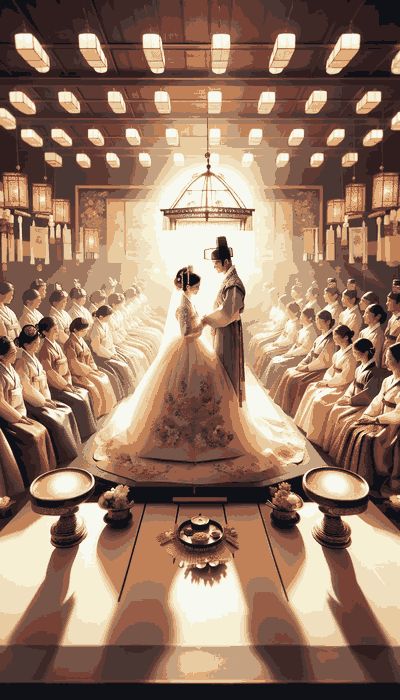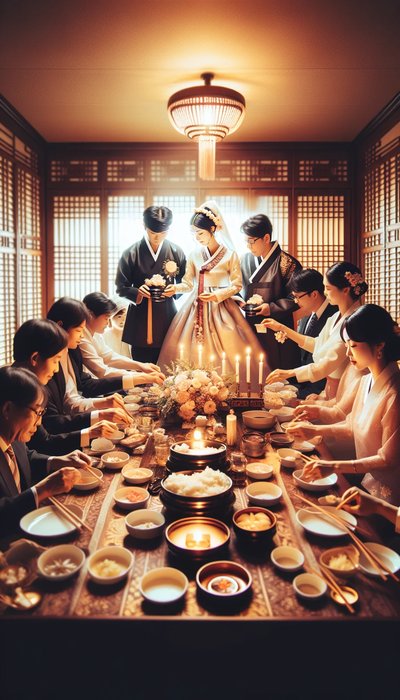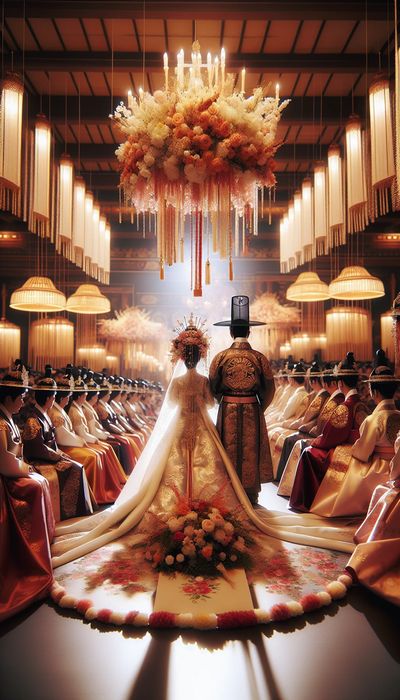Somalia Wedding Traditions Cultural Wedding Guide 2025
What Are Somali Wedding Traditions?
Somali wedding traditions are multi-day Islamic celebrations that unite families through ceremonies including Soo Doonissoh DOH-neesformal proposal, Nikahnee-KAHreligious ceremony, and Aroosah-ROOSreception, typically lasting 7 days and involving 200-500 guests from both clans.
Overview of Somali Wedding Process
- 12 months before: Family discussions begin, potential matches identified through elders
- 6 months before: Soo Doonis formal proposal with male family representatives
- 3 months before: Mehermeh-HER engagement ceremony and dowry negotiations
- 1 month before: Final preparations, gift arrangements (Gabatigah-BAH-tee, Yaradyah-RAHD, SooryoSOHR-yoh)
- Wedding week: Nikah religious ceremony, Aqal Galah-kahl GAHL main celebration
- 7 days after: Shaash Saarshahsh SAHR scarf ceremony marking bride’s married status
Pre-Wedding Traditions and Ceremonies

Soo Doonis: The Formal Marriage Proposal Process
Soo Doonissoh DOH-nees is a formal courtship tradition that initiates the marriage process through family representatives, typically occurring 3-6 months before the wedding and involving 5-15 male elders from the groom’s family.
Cost and Duration
- Traditional cost: Variable gifts worth $500-$5,000 USD
- Duration: 1-3 formal visits over 1-2 months
- Participants: 5-15 male family members from groom’s side
- Location: Bride’s family home
- Success rate: 70% result in engagement agreements
The Soo Doonis Process
- Initial contact: Groom’s male relatives approach bride’s family through respected intermediaries
- Formal visit: Delegation brings traditional gifts and presents marriage proposal
- Family consultation: Bride’s family discusses compatibility, clan relations, and reputation
- Response ceremony: Acceptance communicated through sharing of sweet tea and dates
Regional Variations
Northern Somalia Soo Doonis includes presenting khat (mild stimulant plant) and specific poetry recitations honoring the bride’s lineage, with negotiations extending over multiple visits.
Southern approach differs by incorporating immediate gift exchanges of gold jewelry and requiring presence of religious leaders during initial discussions.
Modern Adaptations
Contemporary families blend traditional protocols with modern communication:
- WhatsApp groups for extended family consultations
- Reduced delegation sizes (3-5 members vs traditional 10-15)
- Professional photographers documenting the ceremony
- Virtual participation for diaspora family members
Meher: The Islamic Engagement and Dowry Agreement
Mehermeh-HER is an Islamic engagement ceremony that formalizes the marriage contract and dowry payment, typically occurring days before or on the wedding day and involving religious officials and witnesses from both families.
Cost and Financial Aspects
- Traditional Meher amount: 100 camels or equivalent ($50,000-$100,000 USD)
- Modern urban Meher: $5,000-$50,000 USD cash or gold
- Diaspora communities: $10,000-$30,000 USD average
- Payment timeline: Can be immediate or deferred
- Legal significance: Becomes bride’s exclusive property
The Meher Agreement Process
- Negotiation phase: Bride states her Meher requirement in consultation with family
- Documentation: Written contract prepared by Imam or religious authority
- Witness assembly: Minimum 2 male witnesses from each family present
- Public declaration: Amount announced before all attendees
- Contract signing: Bride, groom, and witnesses formalize agreement
Types of Meher Payments
Muqaddammoo-KAHD-dahm (immediate payment) comprises the portion paid at marriage, typically 50-75% of total agreed amount.
Mu’akhkhar (deferred payment) represents the remaining amount, payable upon divorce or husband’s death, serving as financial security for the bride.
Contemporary Meher Practices
Modern couples navigate between tradition and practicality:
- Symbolic amounts ($1-$100) in Western diaspora communities
- Mixed payments combining cash, gold, and property
- Educational investments (university tuition) as Meher
- Business capital for bride’s entrepreneurial ventures
Gabati, Yarad, and Sooryo: Traditional Gift-Giving Ceremonies
Gabatigah-BAH-tee is a preliminary gift tradition where the groom’s family presents a valuable offering (traditionally a young camel worth $1,000-$3,000) when first requesting the bride’s hand in marriage.
Yaradyah-RAHD is an engagement day gift ceremony involving monetary or gold presents worth $2,000-$10,000 given directly to the bride’s parents as gratitude for raising her.
SooryoSOHR-yoh is a wedding day money distribution tradition where $1,000-$5,000 is divided among the bride’s extended family members attending the celebration.
Traditional Gift Values
| Gift Type | Traditional Form | Modern Equivalent | Recipients |
|---|---|---|---|
| Gabati | Young camel | $1,000-$3,000 cash | Bride’s father |
| Yarad | Gold jewelry | $2,000-$10,000 | Bride’s parents |
| Meher | 100 livestock | $5,000-$50,000 | Bride only |
| Sooryo | Cash distribution | $50-$200 per relative | Extended family |
Regional Gift Variations
Puntland tradition emphasizes livestock gifts with specific requirements: white camels for Gabati, demonstrating pastoral wealth and honoring nomadic heritage.
Mogadishu custom focuses on gold jewelry and imported fabrics, reflecting the capital’s commercial history and connection to Indian Ocean trade routes.
Gift-Giving Protocol
- Gabati presentation: Delivered during first formal visit by eldest male relative
- Yarad ceremony: Presented publicly during engagement announcement
- Sooryo distribution: Managed by designated family member using prepared envelopes
- Record keeping: Written documentation of all gifts for reciprocal obligations
Wedding Day Ceremonies

Nikah: The Islamic Religious Marriage Ceremony
Nikahnee-KAH is the mandatory Islamic wedding ceremony that legally binds couples according to Sharia law, typically lasting 30-60 minutes and involving an Imam, witnesses, and immediate family members totaling 20-50 attendees.
Nikah Requirements and Costs
- Ceremony fee: $200-$500 for Imam services
- Venue: Mosque (free) or family home
- Duration: 30-60 minutes
- Witnesses: Minimum 2 adult Muslim males
- Documentation: Marriage certificate and contracts
The Nikah Process
- Opening recitation: Imam begins with Quran verses about marriage (5-10 minutes)
- Consent verification: Bride’s waliwah-LEE confirms her agreement to marriage
- Ijab-Qubulee-jahb koo-BOOL: Formal offer and acceptance exchanged three times
- Mehermeh-HER declaration: Dowry amount stated publicly before witnesses
- Du’a ceremony: Collective prayers for couple’s blessed union
Religious Components
KhutbahKHOOT-bah marriage sermon emphasizes marital responsibilities, delivered in Arabic and Somali, lasting 10-15 minutes.
Mithaqmee-THAHK sacred covenant represents the solemn agreement between spouses, invoking Allah’s name as witness to the union.
Modern Nikah Adaptations
Contemporary ceremonies balance tradition with practical considerations:
- Bilingual ceremonies for diaspora communities
- Female scholars co-officiating in progressive mosques
- Live-streaming for distant relatives
- Decorative elements while maintaining religious solemnity
Aqal Gal: The Main Wedding Celebration
Aqal Galah-kahl GAHL is the primary wedding celebration marking the bride’s transition to married life, traditionally held at the groom’s family compound and lasting 6-12 hours with 200-500 guests participating in gender-separated festivities.
Celebration Costs and Scale
- Traditional venue: Family compound (no cost)
- Modern venue: Wedding halls ($2,000-$10,000)
- Catering: $50-$100 per guest
- Entertainment: $1,000-$3,000 for musicians
- Total budget: $15,000-$75,000 USD
The Aqal Gal Timeline
- Afternoon preparation: Venue decoration with traditional fabrics (3-4 hours)
- Guest arrival: Gender-separated reception areas established (5:00 PM)
- Feast service: Traditional dishes served buffet-style (6:00 PM)
- Entertainment program: Buraanburboo-RAHN-boor poetry and traditional music (7:00 PM)
- Bride’s entrance: Grand arrival in traditional attire (9:00 PM)
- Dancing celebration: DhaantoDHAHN-toh and other regional dances (10:00 PM-2:00 AM)
Traditional Elements
Buraanbur is women’s poetry tradition praising the bride’s beauty and family lineage, performed by elder women with decades of experience.
Dhaanto is a traditional Somali dance performed in circles with rhythmic clapping, originating from pastoral communities and symbolizing unity.
Heeshays wedding songs narrate love stories and marital advice, accompanied by oud and drums, with lyrics passed down through generations.
Modern Aqal Gal Features
Urban and diaspora celebrations incorporate contemporary elements:
- Professional DJ mixing traditional and modern music
- Elaborate lighting and decoration themes
- Multi-tiered wedding cakes alongside traditional sweets
- Photography sessions with staged moments
- Mixed-gender dancing in later evening hours
Aroos: The Wedding Reception
Aroosah-ROOS is the evening wedding reception featuring elaborate celebrations with traditional music, dancing, and feasting, typically lasting 5-8 hours and hosting 300-700 guests in decorated halls.
Reception Expenses
- Venue rental: $3,000-$15,000 for premium halls
- Catering costs: $15,000-$35,000 for full meal service
- Decoration budget: $2,000-$8,000
- Entertainment: $2,000-$5,000
- Photography/videography: $2,000-$6,000
Traditional Reception Flow
- Guest reception: Welcoming committee with rose water and dates (5:00-6:00 PM)
- Dinner service: Multi-course meal featuring goat, rice, and salads (6:00-7:30 PM)
- Bride’s first entrance: Traditional diracdee-RAHK presentation (8:00 PM)
- Cultural performances: Regional dances and songs (8:30-10:00 PM)
- Outfit changes: Bride appears in 3-5 different ensembles
- Cake ceremony: Modern addition to traditional celebration (11:00 PM)
Food and Beverage Traditions
Hilib arihee-leeb AH-ree (goat meat) remains the centerpiece protein, prepared with xawaashkhah-WAHSH spice blend, serving 2-3 goats per 100 guests.
Bariis iskukarisbah-REES iss-koo-KAH-rees (spiced rice) accompanies all meals, requiring 50-75 kg rice for typical reception, colored with food dyes.
Caano geelAH-noh gayl (camel milk) serves as traditional beverage option, though often replaced with fruit juices in urban settings.
Entertainment Standards
Modern Aroos receptions feature:
- Professional wedding singers commanding $1,000-$3,000 fees
- Sound systems supporting 500+ guests
- LED screens displaying couple’s photos
- Smoke machines and special effects
- Dance floors accommodating 100+ participants
Traditional Wedding Attire

Somali Bridal Fashion
Diracdee-RAHK is the signature Somali women’s dress made from lightweight fabric worn over a full-length slip, typically costing $200-$1,000 per outfit and requiring 6-8 meters of imported material.
Guntiinogoon-TEE-noh is a traditional one-shoulder draped garment dating to pre-Islamic times, worn by brides during cultural ceremonies and made from 4-5 meters of cotton or silk fabric.
Shaashshahsh is a married woman’s headscarf distinguishing her marital status, made from silk or chiffon materials and gifted during the seventh-day ceremony.
Bridal Wardrobe Costs
| Attire Type | Quantity | Price Range | When Worn |
|---|---|---|---|
| White wedding dress | 1 | $1,000-$5,000 | Nikahnee-KAH ceremony |
| Dirac sets | 3-5 | $600-$5,000 | Reception/Aroosah-ROOS |
| Guntiino | 1-2 | $300-$1,000 | Cultural segments |
| Indian sari | 1-2 | $200-$1,000 | Optional fusion |
| Jewelry sets | 3-4 | $2,000-$10,000 | All events |
Regional Attire Variations
Northern Somalia style features heavier fabrics with intricate embroidery, influenced by Ethiopian and Arabian designs, using gold thread extensively.
Coastal tradition emphasizes flowing fabrics suitable for humid climates, incorporating Swahili coast influences with beaded decorations.
Jewelry and Accessories
XirsiKHEER-see is a traditional Islamic necklace containing Quranic verses, crafted with silver and amber, costing $500-$2,000 for authentic pieces.
Gorogoradgoh-roh-goh-RAHD are traditional gold bangles worn in sets of 21-24 pieces, weighing 50-100 grams total, representing wealth and status.
Groom’s Wedding Attire
Macawismah-AH-wees is a traditional sarong-style garment worn by Somali men, made from cotton or silk, costing $50-$200 for wedding-quality versions.
Koofiyadkoh-FEE-yahd is a traditional embroidered cap worn during religious ceremonies, handcrafted by specialized artisans and costing $30-$100.
Groom’s Wardrobe Investment
- Western suits: 2-3 suits at $500-$2,000 each
- Traditional macawis sets: 2-3 at $100-$400 each
- Islamic thobe: 1-2 at $100-$300 each
- Leather sandals: $50-$150
- Accessories: $200-$500
Contemporary Groom’s Style
Modern grooms balance tradition with international fashion:
- Italian-cut suits for main ceremony
- Designer watches and cufflinks
- Traditional attire for cultural segments
- Matching color coordination with bride
- Professional grooming services
Post-Wedding Traditions

Toddobaad: The Seven-Day Celebration Period
Toddobaadtohd-doh-BAHD is a week-long post-wedding celebration period involving daily gatherings, traditionally alternating between bride’s and groom’s family homes with 50-200 participants each day.
Seven-Day Timeline
- Day 1-3 (Sadexdasah-DEKH-dah): Celebrations at bride’s family home
- Day 4-6: Transition celebrations at groom’s residence
- Day 7: Shaash Saarshahsh SAHR ceremony finalizing bride’s married status
Celebration Costs
- Daily food budget: $500-$1,500 per day
- Entertainment: $200-$500 per day
- Venue decorations: $1,000-$3,000 total
- Total Toddobaad cost: $5,000-$15,000
Daily Activities
- Afternoon gatherings: Women assemble for tea and sweets (2:00-5:00 PM)
- Buraanburboo-RAHN-boor sessions: Poetry recitations praising the couple
- Evening dancing: DhaantoDHAHN-toh and regional dances (7:00-11:00 PM)
- Night feasting: Light meals and beverages served
- Gift exchanges: Ongoing present-giving between families
Shaash Saar: The Seventh Day Scarf Ceremony
Shaash Saar is a women-only ceremony on the seventh day after wedding where married women place scarves on the bride’s head, symbolizing her transition to married status and lasting 3-4 hours with 50-150 female attendees.
Ceremony Components and Costs
- Venue: Usually bride’s new home (no cost)
- Shaashshahsh scarves: 20-50 pieces at $20-$50 each
- Traditional guntiinogoon-TEE-noh: $300-$800 for ceremony
- Refreshments: $500-$1,000
- Total ceremony cost: $1,500-$3,500
The Shaash Saar Ritual
- Bride preparation: Dressed in traditional guntiino with gold jewelry (1 hour)
- Circle formation: Women form circles around seated bride
- Scarf placement: Each woman places shaash while singing blessings
- Advice session: Married women share marriage guidance
- Celebration feast: Traditional sweets and beverages served
Cultural Significance
Dumardoo-MAHR (married woman) status officially recognized through the shaash-wearing tradition, distinguishing from gabargah-BAHR (unmarried girl) in community.
Nabadnah-BAHD (peace) blessings recited during scarf placement invoke prosperity, fertility, and harmony for the new marriage.
Xeedho: Regional Gift Exchange Ceremony
XeedhoKHAY-dhoh is a northern Somali tradition involving ceremonial food containers exchanged between families, typically containing special meat dishes and dates worth $200-$500, occurring during the seven-day period.
Regional Variations
Somaliland Xeedho features elaborate wooden containers called dabqaaddahb-KAHD filled with camel meat and premium dates, requiring specific untying rituals.
Puntland tradition emphasizes competitive displays where groom’s family must reciprocate with equal or greater value gifts.
Xeedho Protocol
- Container preparation: Bride’s family fills ornate vessels (2-3 days before)
- Formal presentation: Male elders deliver to groom’s family
- Untying ceremony: Groom’s family must unknot without errors
- Reciprocal gifting: Return containers filled with different delicacies
- Community witnessing: Elders observe to ensure proper protocol
Modern Adaptations and Diaspora Practices
Contemporary Cost Considerations
Modern Somali weddings represent significant financial investments with wide cost variations based on location and scale.
Comprehensive Budget Breakdown
| Element | Traditional (Somalia) | Diaspora (USA/Europe) |
|---|---|---|
| Mehermeh-HERDowry | $5,000-$50,000 | $10,000-$30,000 |
| Venues | $2,000-$10,000 | $10,000-$50,000 |
| Catering | $5,000-$20,000 | $20,000-$60,000 |
| Attire | $3,000-$10,000 | $5,000-$20,000 |
| Entertainment | $2,000-$5,000 | $5,000-$15,000 |
| Photography | $1,000-$3,000 | $3,000-$10,000 |
| Gifts/SooryoSOHR-yoh | $2,000-$5,000 | $3,000-$8,000 |
| Total Range | $20,000-$103,000 | $56,000-$193,000 |
Financial Planning Strategies
Modern couples employ various approaches to manage wedding expenses:
- Ayuutoah-YOO-toh (traditional savings circles) raising $10,000-$30,000
- Family contributions covering 40-60% of costs
- Extended payment plans with vendors
- Scaled celebrations over multiple locations
- Crowdfunding campaigns in diaspora communities
Digital Integration in 2025
Virtual participation technology enables global family involvement through sophisticated streaming setups costing $2,000-$5,000, connecting diaspora communities across continents.
Social media integration transforms wedding documentation with professional content creators charging $1,000-$3,000 for Instagram and TikTok coverage.
Technology Adoption
- Digital invitations: QR codes replacing paper ($200-$500 savings)
- Livestreaming setups: Multi-camera systems for remote guests
- Wedding hashtags: Aggregating guest photos and videos
- Virtual reality: Immersive experiences for distant relatives
- Drone photography: Aerial celebration footage
Fusion Wedding Trends
Contemporary Somali couples blend traditions with modern elements while maintaining cultural authenticity.
Popular Fusion Elements
Destination components include Las Vegas wedding packages for second receptions, costing $5,000-$20,000, offering convenience for mixed-culture couples.
Multicultural ceremonies incorporate spouse’s traditions, requiring additional planning for Jewish-Somali, Christian-Somali, or Hindu-Somali unions.
Sustainable Practices
- Eco-friendly venues: Solar-powered locations
- Local sourcing: Regional food reducing carbon footprint
- Digital documentation: Paperless contracts and planning
- Ethical jewelry: Conflict-free gold and gems
- Donation options: Charity gifts replacing traditional presents
How much does a typical Somali wedding cost?
A traditional Somali wedding in Somalia costs between $20,000-$103,000 USD, while diaspora celebrations in the USA or Europe range from $56,000-$193,000 USD. The wide range depends on guest count (200-700 people), venue choices, and how many traditional elements are included. Major expenses include the Mehermeh-HERdowry at $5,000-$50,000, venue rentals at $2,000-$50,000, and catering at $50-$100 per guest. Modern couples often use ayuutoah-YOO-toh (savings circles) and family contributions to cover 40-60% of costs. Urban weddings tend toward the higher end due to wedding hall rentals and professional services, while rural celebrations may cost less by using family compounds and community participation.
What is the Meher (Mahr) in Somali weddings and how much is typical?
Meher is the mandatory Islamic dowry paid to the bride, becoming her exclusive property as financial security. Traditional amounts equaled 100 camels (worth $50,000-$100,000 USD today), but modern Meher ranges from $5,000-$50,000 USD in Somalia and $10,000-$30,000 in diaspora communities. The bride determines the amount, sometimes consulting her future husband, and it’s publicly declared during the Nikahnee-KAH ceremony. Payment can be muqaddammoo-KAHD-dahm (immediate) or mu’akhkhar (deferred), with many couples choosing mixed arrangements. Some modern brides request educational investments or business capital instead of cash. The Meher agreement requires documentation by an Imam and witnesses from both families.
How long do Somali wedding celebrations last?
Traditional Somali weddings span Toddobaadtohd-doh-BAHD (seven days) of continuous celebrations, though modern adaptations vary. The timeline includes the Nikah religious ceremony on day one, followed by Sadexdasah-DEKH-dah (three days) of celebrations at the bride’s family home, then three days at the groom’s family home, concluding with Shaash Saarshahsh SAHR on day seven. Each day involves afternoon gatherings (2:00-5:00 PM) and evening festivities (7:00-11:00 PM) with buraanburboo-RAHN-boor poetry, dhaantoDHAHN-toh dancing, and feasting. Diaspora communities often compress celebrations to long weekends (3-4 days) due to work schedules. Daily costs run $500-$1,500 for food and entertainment, totaling $5,000-$15,000 for the full week.
What should guests wear to a Somali wedding?
Wedding guests should dress modestly and colorfully, with specific expectations for men and women. Women wear diracdee-RAHK (traditional dress) or modest evening wear covering arms and legs, with shaashshahsh headscarves in wedding settings. Avoid white (reserved for brides) and black (associated with mourning). Men wear suits or macawismah-AH-wees with dress shirts for traditional segments. Bright colors and patterns are encouraged, especially for women’s attire. Gold jewelry is appropriate and expected. Guests should prepare 2-3 outfit changes for multi-day celebrations. Western formal wear is acceptable at modern venues, but shoulders and knees must remain covered. Comfortable shoes are essential for extended dancing during dhaanto and other traditional dances.
What are the main pre-wedding traditions in Somali culture?
Somali pre-wedding traditions begin with Soo Doonissoh DOH-nees, the formal proposal where 5-15 male relatives visit the bride’s family, bringing gifts worth $500-$5,000. This process takes 1-3 visits over 1-2 months. Next comes Meher, the Islamic engagement ceremony establishing the dowry ($5,000-$50,000) with religious officials and witnesses present. Traditional gift-giving includes Gabatigah-BAH-tee (preliminary gift of $1,000-$3,000), Yaradyah-RAHD (engagement gift of $2,000-$10,000 to bride’s parents), and SooryoSOHR-yoh (wedding day distribution of $1,000-$5,000 among extended family). Northern regions add XeedhoKHAY-dhoh ceremonies with ceremonial food exchanges. Modern couples often compress these traditions but maintain family involvement and religious requirements.
Who typically pays for a Somali wedding?
Traditionally, the groom and his family bear primary financial responsibility for Somali weddings, covering 60-80% of expenses including venues, catering, and entertainment. The groom also provides Meher (dowry) of $5,000-$50,000 exclusively for the bride, plus gift obligations: Gabati ($1,000-$3,000), Yarad ($2,000-$10,000), and Sooryo ($1,000-$5,000). However, modern practices show increasing cost-sharing, with bride’s families contributing to specific elements like her attire ($3,000-$10,000) and Shaash Saar ceremony ($1,500-$3,500). Extended family members help through ayuuto savings circles, potentially raising $10,000-$30,000. In diaspora communities, couples themselves often cover 30-50% of costs, especially when both partners work professionally.
What happens during the Nikah ceremony in Somali weddings?
Nikah is the mandatory 30-60 minute Islamic marriage ceremony legally binding the couple according to Sharia law. Held at mosques or family homes with 20-50 attendees, it costs $200-$500 for Imam services. The ceremony begins with Quranic recitations about marriage (5-10 minutes), followed by consent verification where the bride’s waliwah-LEE (guardian) confirms her agreement. The Ijab-Qubulee-jahb koo-BOOL (offer and acceptance) is exchanged three times, then the Meher amount is declared publicly before witnesses. The ceremony concludes with du’a (prayers) for the couple’s blessed union. Requirements include minimum two adult Muslim male witnesses, written documentation, and the bride’s explicit consent (though she may be in another room). Modern adaptations include bilingual ceremonies and livestreaming for distant relatives.
How do Somali weddings differ by region?
Regional variations in Somali weddings reflect diverse cultural influences and historical traditions. Northern Somalia (Somaliland/Puntland) emphasizes livestock gifts, particularly white camels for Gabati, and features the unique Xeedho ceremony with elaborate food containers. Northern brides favor heavier dirac fabrics with gold embroidery. Southern Somalia (Mogadishu region) shows coastal trading influences with gold jewelry preferences and specific buraanbur poetry styles. Rural weddings maintain traditional timeline (full seven days), use family compounds, and involve entire communities. Urban celebrations compress to weekends, rent wedding halls ($2,000-$10,000), and incorporate professional services. Diaspora weddings blend traditions with host country customs, often including Western elements like wedding cakes while maintaining gender-separated dancing and Islamic requirements.
What is Shaash Saar and why is it important?
Shaash Saar is the seventh-day women-only ceremony marking the bride’s official transition from gabargah-BAHR (unmarried girl) to dumardoo-MAHR (married woman) status. This 3-4 hour celebration with 50-150 female attendees costs $1,500-$3,500 total. The bride wears traditional guntiinogoon-TEE-noh while seated as married women form circles around her, each placing a silk shaash scarf on her head while singing nabadnah-BAHD (peace) blessings. The ceremony includes marriage advice from experienced wives and concludes with traditional sweets and tea. The shaash becomes the bride’s daily head covering, visually indicating her married status in the community. This tradition reinforces women’s support networks and formally welcomes the bride into married women’s social circles, providing ongoing guidance and community connection.
Can non-Somali guests attend Somali weddings?
Non-Somali guests are generally welcome at Somali weddings, particularly for Aroosah-ROOS (reception) celebrations, though certain portions remain family-only. Guests should understand that traditional celebrations maintain gender separation, with men and women in different areas until later evening hours. Modest dress is mandatory - women should cover arms and legs, men wear suits or formal attire. Alcohol is never served due to Islamic principles. Non-Muslim guests can attend most celebrations except the Nikah religious ceremony (usually family-only). Dietary restrictions are accommodated with halal meat and vegetarian options. Guests receive warm welcomes with rose water, dates, and Somali tea. Photography may be restricted during religious segments. Learning basic greetings in Somali and participating in dhaanto dancing shows cultural respect and appreciation.
Frequently Asked Questions
How much does a traditional Somali wedding cost?
Traditional Somali weddings typically cost between $20,000-$193,000, with diaspora celebrations usually at the higher end. This includes all ceremonies, gifts, attire, and week-long celebrations.
How long do Somali wedding celebrations last?
Somali weddings traditionally last 7 days, with the main ceremonies (Nikah and Aroos) occurring mid-week and the Toddobaad celebration concluding the festivities.
What is the Meher in Somali weddings?
Meher is the Islamic dowry ranging from $5,000-$50,000, split into immediate (muqaddam) and deferred (mu'akhkhar) payments as part of the marriage contract.
What happens during the Aroos ceremony?
Aroos is the main wedding reception lasting 5-8 hours, featuring music, dancing, and feasting with 300-700 guests, typically in gender-separated celebrations.
What is the traditional Somali bridal attire?
Traditional Somali brides wear the dirac dress, guntiino garment, and shaash headscarf, with complete bridal attire costing between $3,000-$10,000.
What is the Soo Doonis ceremony?
Soo Doonis is the formal marriage proposal where 5-15 male elders visit the bride's family over 1-2 months, bringing $500-$5,000 in traditional gifts.
What happens during the Toddobaad celebration?
Toddobaad is a seven-day post-wedding celebration involving daily gatherings at both families' homes, costing $5,000-$15,000 in total.
Is the Nikah ceremony required in Somali weddings?
Yes, the Nikah is the mandatory Islamic religious ceremony that legally binds the couple in marriage, lasting 30-60 minutes with an Imam and witnesses present.
What is the Shaash Saar ceremony?
Shaash Saar is a women-only ceremony on the seventh day where scarves are placed on the bride's head, symbolizing her new status as a married woman.
How are modern Somali weddings different from traditional ones?
Modern Somali weddings often incorporate digital elements, may be shorter in duration, and frequently blend traditional customs with contemporary practices, especially in diaspora communities.